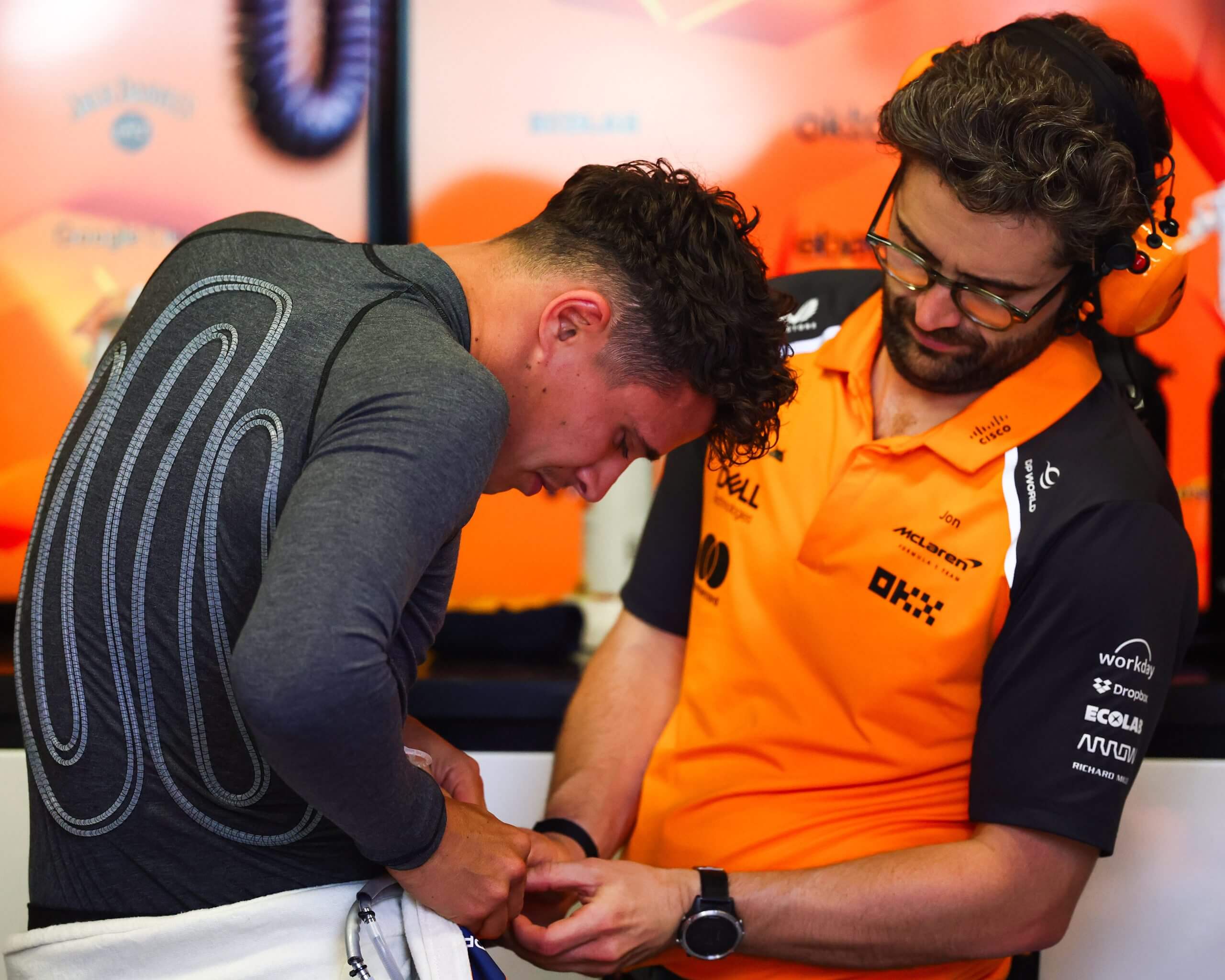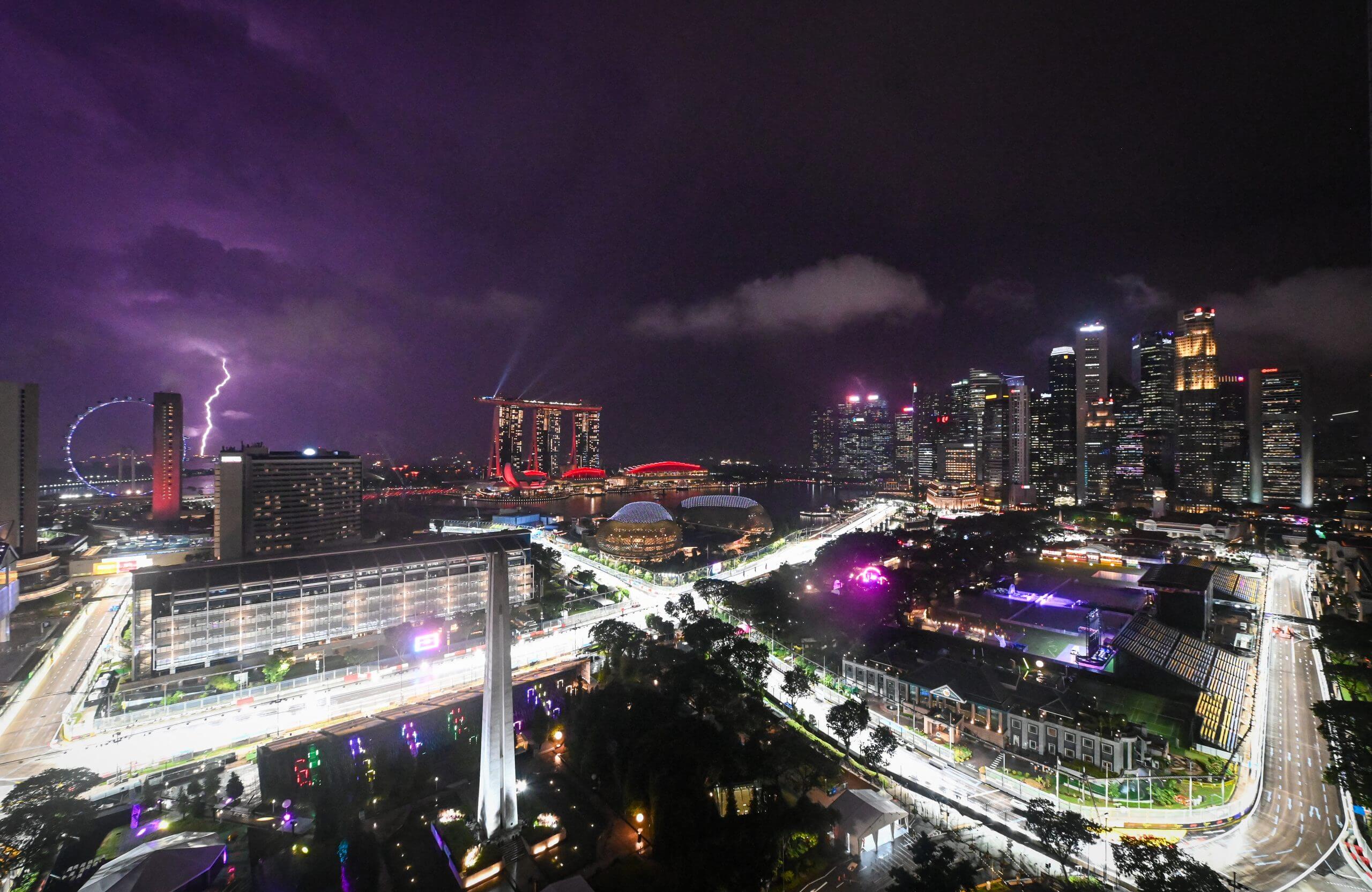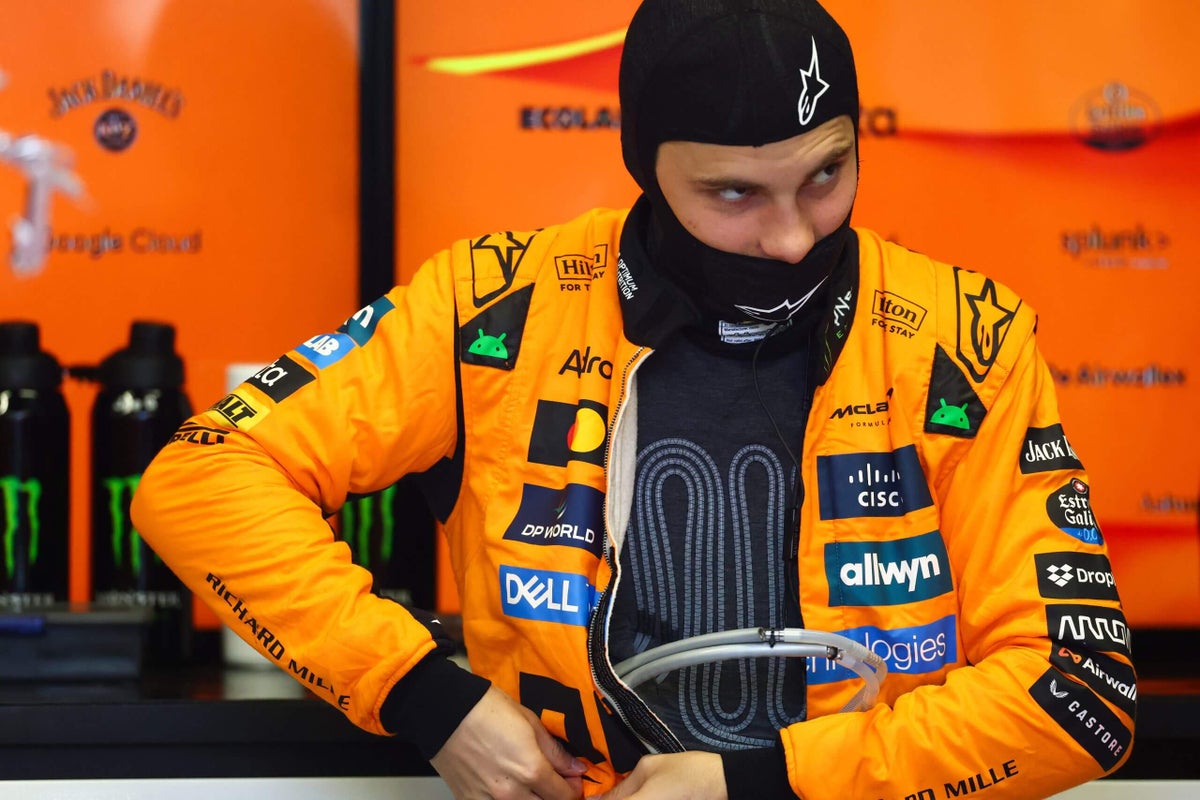SINGAPORE — Formula One will experience its first heat hazard race this weekend.
Rui Marques, the F1 race director, notified teams before Thursday’s media day at Marina Bay Street Circuit that the FIA’s ruling, introduced this year, would be in place for Sunday’s race.
The term was formed following the 2023 Qatar Grand Prix, where drivers experienced physical symptoms after racing in the intense heat and humidity. Williams driver Alex Albon needed help out of his car after that race, and Esteban Ocon said he threw up in his helmet.
During that weekend, the temperatures were around 32ºC (90ºF), while the humidity was approximately 70 percent.
The governing body said afterwards that it “prefers to take material action now to avoid a repeat of this scenario,” and this came in the form of heat hazard declarations and driver cooling aids.
Singapore is known for being a tricky race weekend, as drivers navigate the tight confines of the track and the humid conditions.
Temperatures are forecast to reach 31ºC (87.8º F) during the race, which is the bar for declaring a heat hazard. The declaration leaves the teams and drivers with two options — wear the cooling vest or carry more ballast in their car.
What are the cooling vests?
The FIA, motorsport’s governing body, introduced wearable cooling technology this year. Tubes attached to the fireproof shirt allow cooling liquid to circulate.
But it’s not a guarantee that these systems will always work. After all, mechanisms do fail. Were this to happen, it could lead to higher cockpit temperatures and discomfort, impacting a driver’s health and performance.
In March, NASCAR driver Brad Keselowski’s cooling suit failed at Circuit of the Americas, and he was carried from pit road on a stretcher after finishing the race. His condition improved after receiving IV fluids at the infield care center.
There’s also the concern about whether the cooling substance will melt too quickly. Haas driver Ollie Bearman explained on Thursday how “the only issue is that if it melts too fast, then you’re just circulating hot water, and then it’s probably heating you more than not wearing it. That’s the trade-off.”

Lando Norris is pictured wearing a cooling vest at the Spanish Grand Prix. (Clive Rose – Formula 1 via Getty Images)
Though it is required in F1’s sporting regulations for teams to ensure all components of the cooling system are functional and available, the drivers aren’t required to wear them.
If they don’t, the teams will need to add ballast to the cockpit — weights placed strategically around a car to meet a weight requirement while still optimizing handling and balance.
The regulations state: “The difference in mass between the driver’s personal equipment normally used and any items of a driver’s personal equipment that form part of the system must be compensated by the fitting of 0.5kg of ballast in the cockpit.”
‘Itchy’ and ‘a bit uncomfortable’ — What the drivers say
Despite the predicted temperatures, some drivers would prefer not to use the cooling system this weekend.
Racing Bulls’ Liam Lawson told reporters Thursday, “I probably won’t be running it unless we’re forced to.” He added he found it “not the most comfortable.”
And he’s not the only one. Ocon said in April during the Bahrain Grand Prix weekend, “It’s a good initiative, but unfortunately, I can’t quite use it at the moment. The way the seats are designed and with some of the vests — it’s very different from what we are currently using. It’s much bulkier and bigger.
“We would need to redo a complete seat, and I’m not even sure that doing that would still be suitable in corners.”
Six months later, the sentiment regarding the discomfort remains the same. Bearman tried the system during FP1 in Hungary in August and found it was “a bit uncomfortable,” though he would rather use it.
Ferrari driver Lewis Hamilton said on Thursday, “I’ve never used it, but I’ll try it. It’s quite uncomfortable. It itches a lot — not sure I want to drive with an itchy top on.”

The road circuit for this weekend’s Singapore Grand Prix. (Roslan Rahman/AFP via Getty Images)
These systems have been worn in race conditions before. Mercedes’ George Russell sported the vest during the Bahrain GP this year, when he finished second, and acknowledged Thursday how the drivers have differing views on their comfort.
But changes can be made to the devices. He said, “It’s where the tubes on your back connect to the tubes on your front, and they have to go around your ribs. And when you go through high-speed corners and the G-force, you’re feeling these tubes on the side of your ribs. That was definitely an issue for me at the beginning.
“They made some changes — it has been improved. But still, you have these tubes going around your ribs, which is not the perfect place. There aren’t many high-speed corners here in Singapore and high lateral G-forces, so I don’t think it would be a major issue.”
Albon echoed a similar sentiment as he explained how the vest has “different ways to make it work.”
He added, “I don’t see it as a bad thing — and it’s safe. It’s a good thing. It’s another step forward in making all drivers comfortable. It’s likely I’ll be using it this weekend. As a team, Williams, we started using it early last year, experimenting, so we’ve got a good grasp of how to make it efficient and work for us and make it comfortable.”
Given the temperatures and humidity, the cockpit can feel like a sauna, Russell said. We’ve already seen the physical toll this race has on drivers, most recently on the seventh season of Drive to Survive.
At the end of the day, it is a choice, and given the mandatory nature of a heat hazard, there is no competitive advantage for weight.
(Top photo: Clive Rose/Formula 1 via Getty Images)

